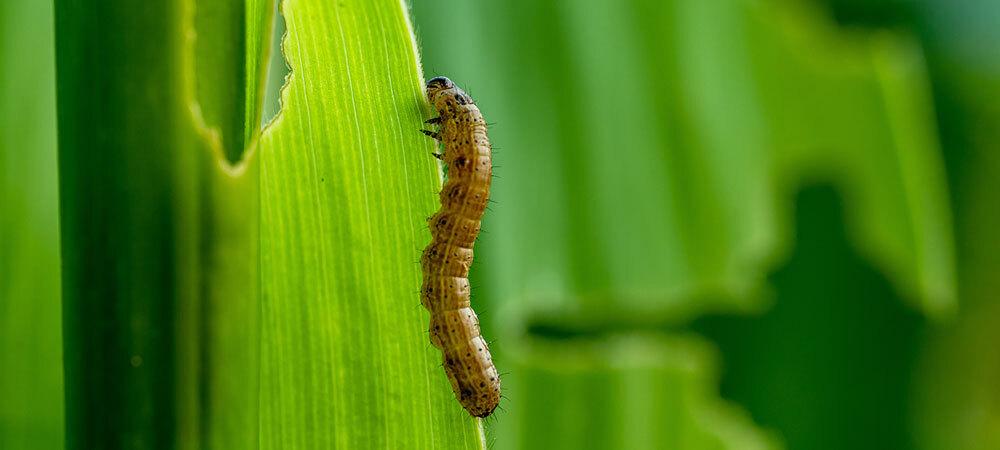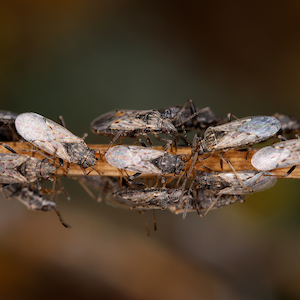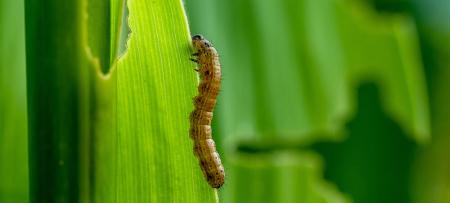Top 3 Texas Summer Lawn Pests and How to Get Rid of Them

Texas summers are notorious for their sweltering heat, but if you're a homeowner, you know the real challenge is keeping your lawn looking lush and green. Amidst the blazing sun and infrequent rain, your lawn might be under attack from some persistent pests. In this blog, we’ll delve into the top three lawn pests plaguing Texas lawns in the summer: Chinch Bugs, Armyworms, and Bermudagrass Mites.
1. Chinch Bugs

Identifying Chinch Bugs
Chinch bugs are tiny, but they can cause significant damage to your lawn. Here’s how to identify them:
- Size and Color: Chinch bugs are about 1/5 inch long. Adult bugs have black bodies with white wings that overlap on their backs.
- Nymphs: Younger nymphs are red with a white band across their backs, gradually turning black as they mature.
Signs of Infestation
- Yellowing Grass: As chinch bugs suck the sap out of grass, it causes the grass to turn yellow and brown, resembling drought stress.
- Patchy Areas: Infested areas often appear as irregular patches of dead grass that start small and gradually expand.
- Presence of Bugs: You might see these small insects on the soil surface, particularly in hot, dry, and sunny areas of your lawn.
To confirm a chinch bug infestation, you can use the floatation method. Cut the bottom out of a metal can, push it into the soil, and fill it with water. If chinch bugs are present, they will float to the surface.
How To Get Rid of Chinch Bugs
- Proper Watering: Chinch bugs thrive in dry conditions, so ensure your lawn is adequately watered. Aim for deep watering sessions rather than frequent, shallow watering.
- Maintain Lawn Health: Mow your lawn at the correct height and avoid cutting it too short. This reduces stress on the grass and makes it less attractive to pests.
- Use Insecticidal Soap or Neem Oil: These organic treatments can help control chinchbug populations. Apply according to the product instructions, ensuring even coverage.
- Apply Chemical Insecticides: For severe infestations, use a chemical insecticide specifically labeled for chinch bugs. Follow the manufacturer’s instructions carefully, applying during cooler parts of the day to minimize harm to beneficial insects.
2. Armyworms

Identifying Armyworms
Armyworms are the larvae of moths and are particularly destructive to lawns. Here’s how to identify them:
- Appearance: Armyworm larvae are grayish-green with dark stripes running along their sides and back. They grow to about 1 to 1.5 inches in length.
- Moths: The adult moths are brownish-gray with a wingspan of about 1.5 inches and a distinctive white spot in the center of each forewing.
Signs of Infestation
- Chewed Grass Blades: Grass may look ragged or scalped, especially when the infestation is severe.
- Brown Patches: Large areas of brown, damaged grass that appear suddenly.
- Visible Larvae: Armyworms are most active early in the morning or late in the evening. You might see the caterpillars themselves during these times.
To detect armyworms, inspect the lawn at dawn or dusk. You can also mix 1 gallon of water with 1 tablespoon of dish soap and pour it over a small area of the lawn. Armyworms will surface within minutes if they are present.
How To Get Rid of Armyworms
- Regular Inspections: Check your lawn frequently, particularly in late summer and early fall when armyworms are most active. Early detection is key.
- Biological Controls: Introduce beneficial nematodes or use Bacillus thuringiensis (Bt). These natural predators and bacteria target caterpillars without harming other wildlife.
- Chemical Insecticides: Apply a lawn-safe insecticide labeled for armyworms. Timing is crucial; apply in the late afternoon or early evening when armyworms are feeding.
3. Bermudagrass Mites
Identifying Bermudagrass Mites
Bermudagrass mites are microscopic and can cause extensive damage to Bermudagrass. Here’s how to identify them:
- Size and Color: Bermudagrass mites are nearly invisible to the naked eye. They are less than 1/100 inch long and typically require a magnifying glass to be seen.
- Location: They live in the leaf sheaths and suck the sap from the grass blades.
Signs of Infestation
- Stunted Growth: Infested grass blades may appear short and stunted.
- Witches' Broom: This symptom appears as a tufted, bushy growth at the tips of grass blades, resembling a broom.
- Yellowing Grass: The affected turf may exhibit a general yellow or brown discoloration.
To confirm an infestation, closely examine the grass blades and sheaths with a magnifying glass. Look for the tiny, white to yellowish mites.
How To Get Rid of Bermudagrass Mites
- Regular Mowing and Watering: Keep your lawn well-watered and mow regularly to reduce stress on the grass. This helps make your lawn less attractive to mites.
- Use Organic Sprays: Apply horticultural oil or insecticidal soap to manage mite populations. Ensure thorough coverage, particularly in the affected areas.
- Apply Chemical Miticides: For severe infestations, use a miticide labeled for lawn use. Follow all application instructions carefully to ensure effective control while minimizing harm to beneficial organisms.
General Lawn Care Tips for Preventing Pests
Maintaining a healthy lawn is your first line of defense against pests. A well-cared-for lawn is more resilient to infestations and diseases. Here are some comprehensive lawn care tips to prevent pests and keep your grass looking its best all year round:
- Water Deeply and Infrequently: Provide 1 to 1.5 inches of water per week, preferably in the early morning.
- Mow at the Right Height: Follow the one-third rule and keep mower blades sharp to avoid stressing the grass.
- Aerate Annually: Reduce soil compaction and improve root growth by aerating once a year.
- Fertilize Properly: Use balanced or organic fertilizers and follow recommended application rates.
- Test Soil Regularly: Conduct soil tests every few years to adjust nutrient levels and pH.
- Inspect for Pests Frequently: Look for early signs of pest activity to take prompt action.
- Encourage Beneficial Insects: Attract natural predators like ladybugs and lacewings to help control pests.
- Control Weeds: Remove weeds regularly to reduce competition for resources.
- Manage Thatch: Dethatch if the layer exceeds 1/2 inch to prevent pest harborage.
- Overseed Annually: Fill bare spots and improve turf density to crowd out weeds and pests.
By staying vigilant and adopting these proactive measures, you can keep your Texas lawn looking its best throughout the summer. Don't let pests ruin your outdoor space—take action at the first sign of lawn damage and enjoy a lush, green lawn all season long!
Professional Lawn Pest Control
Hiring a professional Houston exterminator ensures the effective and efficient elimination of common lawn pests like chinch bugs, armyworms, and Bermudagrass mites. Our experts use advanced tools and targeted treatments tailored to your lawn’s needs, providing comprehensive protection and long-term health. Enjoy a lush, green, pest-free yard without the hassle—contact us today for a free consultation and experience professional pest control services.